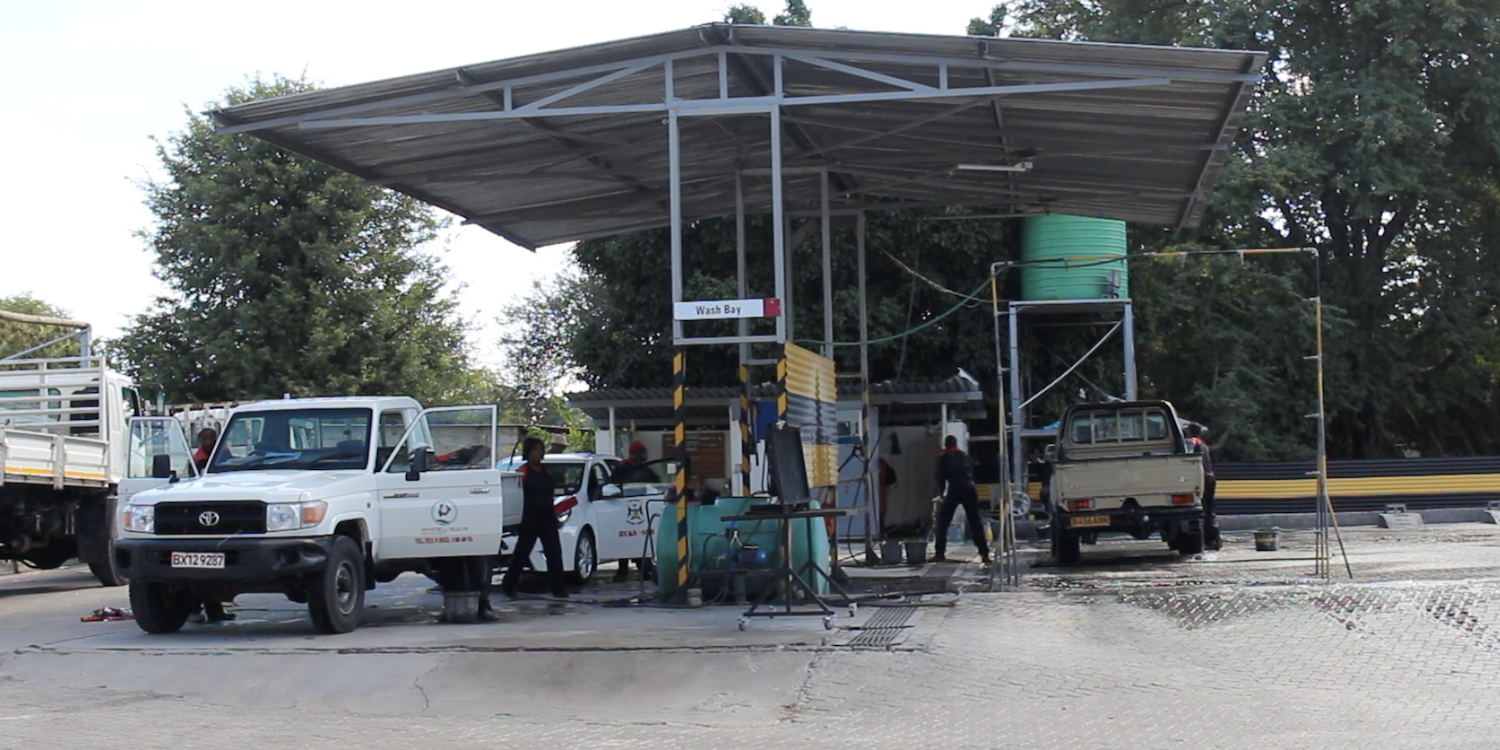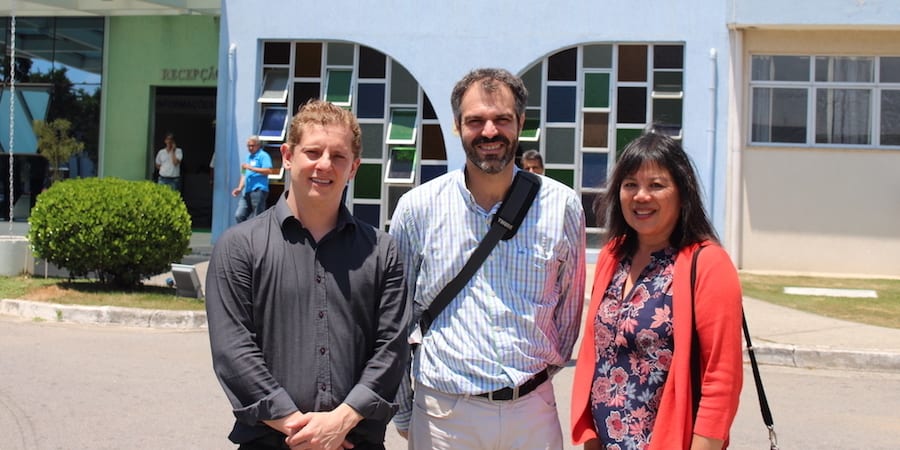
How a Turkish textiles firm thrived using lean manufacturing
CASE STUDY - Faced with high costs, low demand and growing competition from China, Turkish textile manufacturer Yesim managed to develop a competitive advantage by transforming its ways with lean thinking and increasing its focus on the customer.
Words: Can Yükselen, Lean Institute Turkey; Neslin Özkaya and Yücel Molla, Lean Office, Yesim Textile
As the Turkish economy slowly recovered from the large-scale crisis it experienced in 2001, the volatility of yarn prices and dollar rates still worried top management in the country’s apparel industry. At the same time, customers’ expectations and taste were changing. (Customers now expected a higher variety of colors, patterns, and prints in smaller lot sizes. The demand for basic models started to decrease, as well as requests for interim storage. More importantly, an increasingly fierce competition reached Europe from China. To boost its flexibility and remain competitive, Yesim Textile strived to keep inventory levels under control and reduce costs.)
Lean principles emerged as the way forward: the journey of transformation began in 2006 with the support of a customer along with the enthusiasm of senior leadership.
It’s increasingly common for organizations to start to implement lean with the encouragement of a customer, a sign of the fact that more and more companies now understand the inherent value of a leaner supply chain.
It was a customer who first pushed Yesim towards lean thinking. The two companies had been working together closely since 2005 to increase flexibility, lower costs and improve quality.
Furthermore, the customer had come to realize that they couldn’t continue to work with suppliers who would not align with their new and leaner way of doing business. In fact, they promised to support those suppliers that agreed to follow in their footsteps and embraced change.
As nice as this sounded, however, for Yesim the prospect signaled a difficult transformation process ahead: all the principles, targets, and expectations that came with the partnership had to be adopted throughout Yesim Textile and cascade down to employee level.
MAKE PROCESSES LEAN

When it set off on its lean journey, Yesim faced high rates of inventory and work-in-process (WIP). There was a lot of rework taking place in each process, and a lot of movement of goods between warehouses. Additionally, changeovers sometimes took an entire shift just for the completion of the setup phase.
In the sewing processes, where a focus on individual performance was prevalent, each employee had to produce a fixed number of units each day.
In production activities taking place in environments characterized by a functional layout, each step of the process happens separately from the next, which at Yesim led to the emergence of independent process islands. Ironing and packaging, for example, were carried out in separate places away from the sewing line.
The sewing department was experiencing high levels of rework and a low ratio of “right first time”.
Batch-and-queue production, combined with the negative effects of rework, highlighted the necessity for streamlining activities across the department’s processes.
In the cutting process, for example, different cut panels had to be combined since those prepared in batches could not form correct and complete patterns.
Therefore, the parts of fabric - which form the end product, like front body, arms, back body, neck, etc. - with pieces that were missing due to quality defects could only be completed by matching them up with those that had been manufactured correctly.
This required a lengthy sorting operation that had a big impact on throughput time: a team was tasked specifically with this operation. In other words, Yesim required secondary labor.
Despite all these difficulties, however, Yesim could count on one element: very low personnel turnover rates. The organization’s employees represented the most enthusiastic supporters of the company’s lean transformation.
At the beginning, when Yesim started to work with the Lean Institute Turkey, a project group was established that comprised of representatives of all departments.
In the transition to lean production, value stream maps were prepared for the current/future state in order to gain visibility of the overall situation in the factory and to identify future kaizen opportunities.
LINE LAYOUT AND TEAM LEADERS
Because of the various manufacturing processes taking place in the factory, a pilot area, machine or line was selected from each production area.
Lean completely changed the way the work was performed in the sewing department.
For example, one-piece flow was introduced for the ironing and control activities at the end of the line, to remove work-in-process (WIP) and inventory.
As a consequence, controls became easier as lots of products that were ready for packaging and proceeded in batches along the line were removed. Moreover, waste in the form of unnecessary handling of products between processes was reduced.
One-piece flow from beginning to end was established on the lines, which in turn led to the detection of quality problems before they became chronic and to decreasing levels of inventory.
The introduction of an andon system based on team leadership ensured easy intervention on the line in the event of a mechanical failure, quality or production problem, or whenever necessary.
A system in which team leaders solve and notify of problems was put in place.
Likewise, visual help was provided by means of andon lights placed on every machine and on every production line.
Usefully, colors represent problems that are identified. For example, if a machine stops due to a quality problem, a team leader is notified by means of a red stack light. In such a case, the affected machine stops and operators interrupt production until the problem is solved. In the event of machine failure, an andon will be pushed at the end of the line, production will stop and the red stack light will notify the maintenance team.
A problem that is managed in a visual way can be solved with minimum waiting time.
Such a system encourages team leaders to take responsibility for the development of the organization. A team leader was chosen from the most competent people on the team to be the one who has comprehensive knowledge of all the details of the process. Thus, no difficulties were encountered in responding to production problems or imbalances.When these occur, team leaders support their team members working with them on a proportion of 20-30% of the current workload.
Finally, with the introduction of one-piece flow defects were detected whenever and wherever they occurred and were repaired right away, rather than after final inspection.
Another very big problem in production was that line setup could last as long as an entire shift. It was solved with the help of setup cars, designed specifically to carry parts necessary for changeovers to operators and working stations.This prevented people from having to vacate the entire line and wait for the maintenance team to apply the necessary modifications.
Following internal and external setup analysis, this model was put forward and the necessary preparation steps started to be carried out before the conversion of the line, to minimize the impact on changeover times.
Another element that was critical to making changeovers smoother was classifying products by product family and grouping them by production line.
Products that had been classified according to group technology started to be produced on the same lines with similar families of products.
As a result, changeover time went down to 15-20 minutes by applying minor modifications rather than investing time and resources to change machinery or re-design layout.
PEOPLE
As part of its strategy to develop people, Yesim provided training on kaizen and 5S and commissioned a number of applications of these techniques.
As the company initiated full-scale lean work, all resources were mobilized to rationalize operations as the first step of 5S, both in the production and office areas, while a team of auditors was asked to conduct unannounced inspections.
This aimed to promote a new culture and to ensure discipline, and entailed the use of special checklists with different criteria based on each department (sewing, knitting, dyeing, printing, etc.). The team leaders used them to assess performance and plan follow-up actions accordingly, essentially taking the first steps towards a lean transformation.
After the required changes had been completed and awareness created, the responsibility for 5S was transferred upon trained process owners responsible for implementation and auditing on the field.
Kaizen techniques were applied simultaneously with 5S. The expectation was the internalization and adoption of the philosophy of continuous improvement by employees.
After giving training on the 12-step kaizen format, team leaders and method engineers began to work in partnership to pioneer the process.
At first, kaizen proposals began to emerge as part of the teaching process; however, they soon spread among team leaders first and team members later.
In accordance with the kaizen format, several activities were handed over to the team leaders: current situation analysis; identification of targets; preparation of project plan; creation and implementation of an action plan; before-and-after comparisons; evaluation of positive impact on business results; and the follow-up processes.
Because the kaizen projects were open to everybody, workers were given the opportunity to express themselves and bring to fruition proposals that contributed to their personal development, such as public speaking. Thus, the culture of problem solving was put under the responsibility of the whole team, not just of those working in production.
Consequently, a problem-solving culture began to take shape throughout the company, all the way down to the shop floor.
STRATEGY DEPLOYMENT
Production targets became achievable by setting the right team-based KPIs for each line that had been balanced. Hourly production display boards were placed next to each of them: this way, data on the number of items produced hourly, efficiency, repairs, stains, and quality, updated by team leaders, were made available to all team members.
The lines driven by takt time, whose performance was measured against KPIs, were used for policy deployment, which encouraged each team member to contribute to production improvements, embracing team spirit and working towards a common goal.
Product diversity and changing customer demands required team members to increase their competencies.
Operators were classified in four groups, according to their skills and level of knowledge of the process:
- receiving training;
- able to complete the work with support;
- able to complete the work by themselves;
- able to provide training.
Training plans were drawn to increase competency according to the multi-skills sheet prepared for operators, so that each of them could be brought to a level of knowledge that encompassed more than one operation or machine.
This also increased flexibility, a significant advantage that lean production lines offer. Consequently, should an operator be absent or off sick, either the team leader (who is competent in all types of work) or another operator could fill in and complete the job.
For garment production lines, teams were formed with a changing number of members depending on the product. Each team had a leader responsible for outputs and the continuous improvement of operations.
There was also a group leader who was, in turn, responsible for all team leaders. This person, who directly reported to the production manager, managed and followed up on the KPIs and acted as an advocate for the personal development of employees.
The operators who were used to look at personal performance before lean was introduced were given team-based objectives and were soon able to adapt to the advantages of teamwork. They played an important role in the improvement of KPIs (cost, quality, safety, and delivery).
In the meantime, employees on every line became aware of the improvements in the sewing area, and decided to get involved in lean activities themselves.
The foundations of cultural change were laid, and the transformation process accelerated.
A MESSAGE FROM THE CEO
The fact that CEO Senol Sankaya took part in the transformation in person went a great length to encourage more people to adopt lean principles across the organization.
His efforts facilitated the diffusion of the new culture and prevented the lean transformation from slowing down as it reached managerial level – posters with quotes from him hang to walls and machines all around the facility.

Here’s what Mr Sankaya has to say about lean:
“At Yesim, we have been working with lean production and management since 2006. Back then, the textile and apparel sectors suffered from high costs and low demand, and it was impossible for manufacturing companies like us to survive by simply reducing items’ costs and prices. While searching for a solution in such difficult times, we came across lean. We are one of the few organizations in the sector to have adopted its principles in Turkey.
Thanks to them, we had an opportunity to observe our day-to-day development under one single objective within a coordinated organizational model, which penetrated all management levels. To achieve our business objectives through lean thinking has become our aim. We also took at the opportunity to make regulatory improvements as we addressed our successes and failures and assessed our performance against development objectives and strategies, during routine follow-up meetings.
Similarly, we carried out extensive research in order to effectively prioritize, plan and manage different projects.
In the last seven years, we have adopted lean production and management principles in our corporate culture through staff developments and continuous improvement efforts. We are still on a journey to becoming lean, but the results we have achieved prove, day after day, that we are on the right track. Lean will be guiding us, Yesim, into our future.”
A CHANGE IN STRUCTURE, AND THEN CULTURE
In 2007 the company's approach to organizing business units changed dramatically, with an increased focus on individual value streams as opposed to departments.
Business units for different customer groups were created: each floor at Yesim now “houses” a value stream, in which all the activities and people serving a specific customer are consolidated.
On these floors, prototypes are created and the current product line is showcased (it’s like entering one of the stores you can find in your city). Client representatives are available on site, and this facilitates the relationship with the customer.
Bringing people who are working on the same process together ensures alignment, as well as better quality and communication.
Merchandisers, planners, logistics and supply officers, production follow-up supervisors, and sample suppliers for product groups work together, on the same floor. Problems can now be solved directly by people sitting in the same office.
In the fashion industry, there are product changes all the time. Working together with clients helped Ye?im to reduce lead-times for new products.
Two years later, in 2009, Yesim's lean journey moved one step closer to a full cultural transformation with the appointment of Tunç Aydogan, the former manager of the knitting department, as lean manager.
This coincided with the Second Phase of the transformation, which is mainly focused on helping shop floor workers to internalize lean thinking, on deploying lean practices, and on supervising the system.
HOW THE SECOND PHASE BEGAN

Once hired, Mr Aydogan was given a three-month NOS (Novus Ordo Seclorum, which translates into A new order has began) training in Sri Lanka. Subsequently, Neslin Özkaya took the same training, which she then rolled out across the organization as a Lean Office was established at Yesim.
During this period, Yesim Textile focused on developing the employees working on the shop floor. The format of the training was revised along the way - it was given as a workshop in order to include both theoretical knowledge and practical application, with some sessions held at the gemba.
The purpose, importance and future benefits of lean, concepts that were emphasized in all sessions, were communicated through direct experience. In order to evaluate the effectiveness of the training, audits including the workers were conducted. The best-performing lines were identified and their results praised and celebrated.
Following the results of the audits, plans for refresher training were made, to boost the level of awareness on the matters that obtained the lowest scoring.

A NEW ORGANIZATIONAL STRUCTURE
One of the most important steps within the second phase, aimed to achieve sustainability, was taken in 2011, with the consolidation of the lean, quality, human resources and social compliance departments.
The interaction between the functions it oversees naturally increased. For instance, the co-operation between social compliance and lean office led to the transformation of 5S audits into 7S audits.
As the program of transformation developed, team members who were previously supervised by 5S auditors came up with systems for self-assessment.
Yesim Textile updated its checklists adding a sixth “s” for “safety” and a seventh “s” for “spirit”.
Today, with a re-gained competitiveness and a more flexible business model, Yesim can concentrate on extending the reach of its lean program to its facilities in Moldova and Egypt, and to boosting its environmental performance (in 2010 and 2011 it obtained patents for its Yesim Organic and the Yesim Recycle brands, and at the end of 2012 it became a member of the Better Cotton Initiative).
THE RESULTS
Although the sewing department went from two work shifts per day to one, the increase in its production capacity revealed a high level of efficiency. But the revenue gained per man-hour did not result in any layoffs. It was clear to everybody at Yesim that the lean transformation was a process of cultural change, a growth strategy and a journey focused on development, as opposed to a way of getting rid of workers or of simply driving profits.
Employee engagement and motivation represent the key drivers of the transformation.
Thanks to the leaner layout that was introduced, the empty spaces in the facility were turned into locations for meetings with customers, for displaying sample products, for keeping the model lines. Moreover, the previously outsourced printing and embroidery production areas were brought in house, which resulted in a reduction of transportation time and in the speeding up of intervention and problem solving.
The cost reductions achieved allowed the organization to use its existing capacity for new investments, without laying off any employees.
Not only did Yesim Textile fully embrace lean in its organizational structure, but it also sought ways to promote the methodology among its suppliers and to support their transformation. This became necessary when Yesim realized, after completing the internal transformation and beginning its cultural change, that the only way to fully model its structure and operations around the idea of a holistic value stream was to help develop a lean supply chain.
Through its lean journey Yesim learnt to effectively compete with China. The competitive advantage that Turkish companies can develop is the ability to offer shorter lead-times than China’s. From a wider business perspective, the experience of Yesim teaches us that the future of supply chains is in regional sourcing as opposed to apparent but unreal low-cost sourcing.
Read more


FEATURE – The author explores the relationship between kanban and improvement and discusses how using it can impact our lean transformation.



VIDEO - The author of Lean with Lean explains why he published a collection of papers rather than a business novel - his signature writing style - or a manual. Experience lean through the eyes of one of its greatest students... one a-ha moment at a time.


FEATURE – A leader’s creativity and care for her people can lead to extraordinary results even in the most challenging of environments. As the latest LGN book comes out, the author reflects on one of the most impressive lean transformations you will come across.


VIDEO INTERVIEW – Last year, the Lean Global Network launched an initiative to leverage the knowledge of our institutes to positively impact the healthcare industry. We caught up with the group in São Paulo this week.

